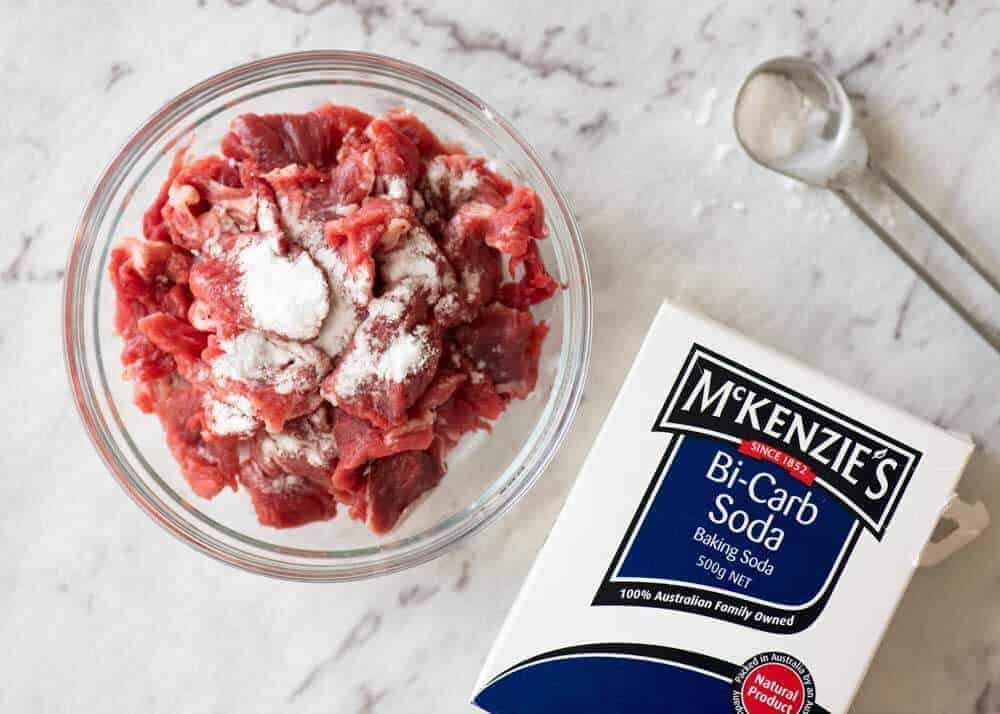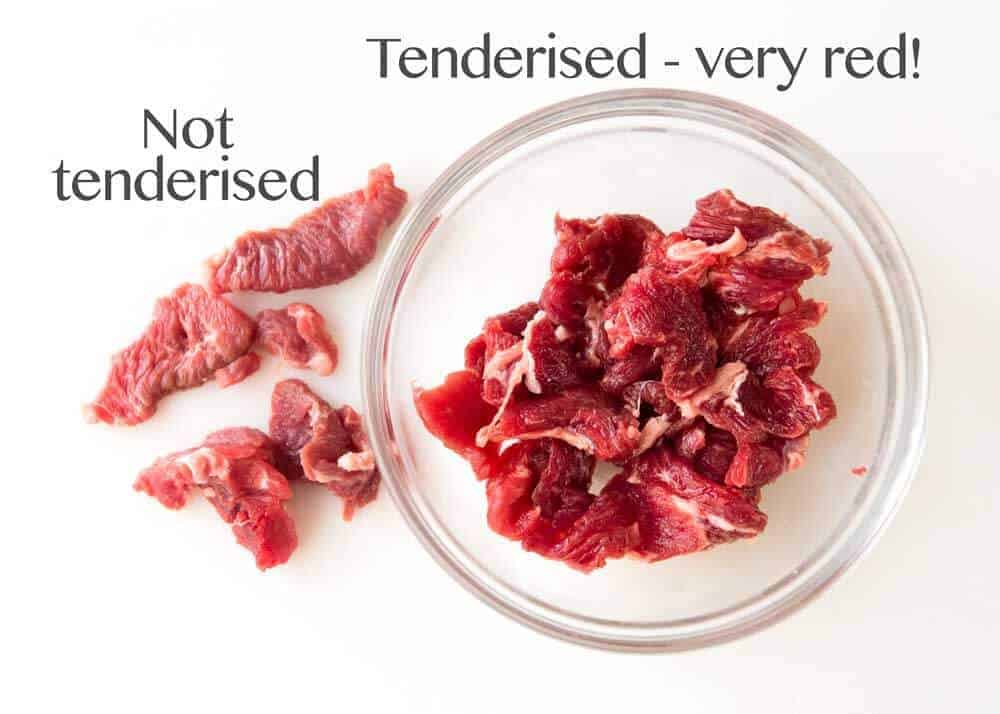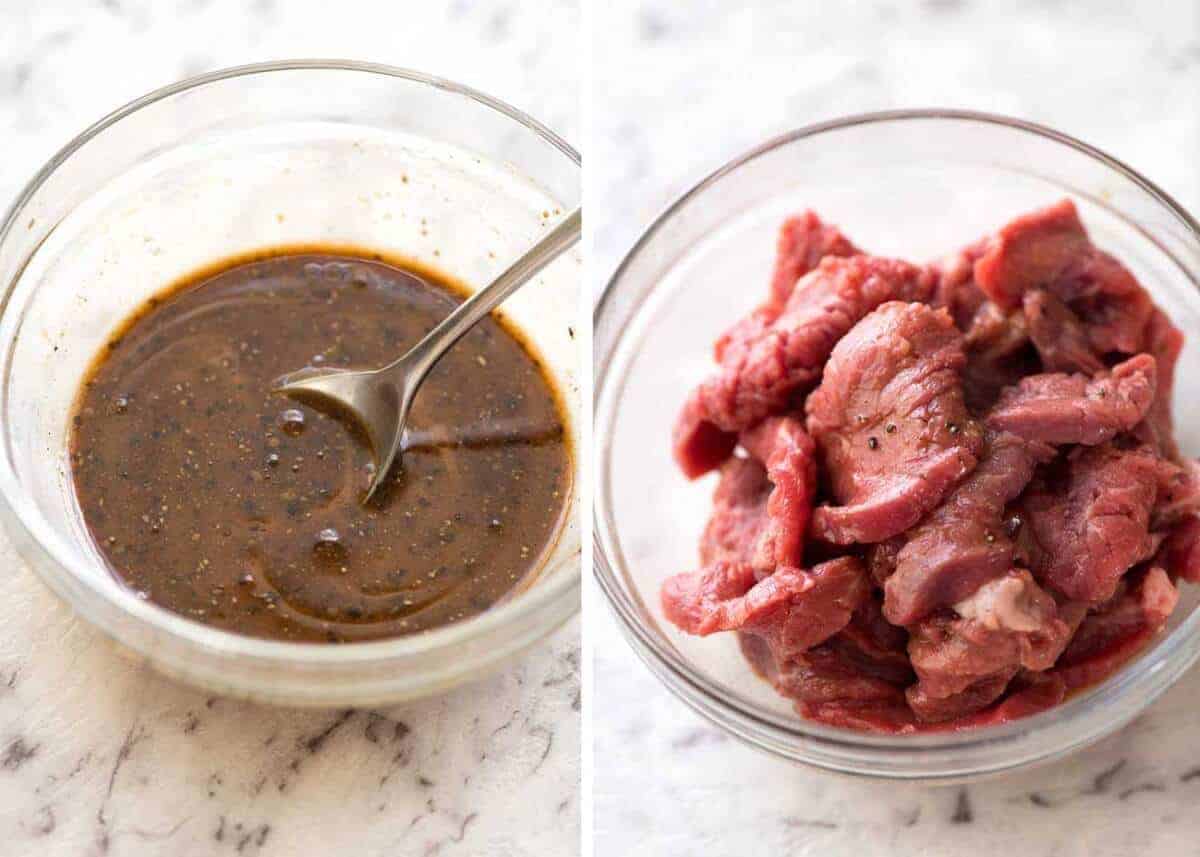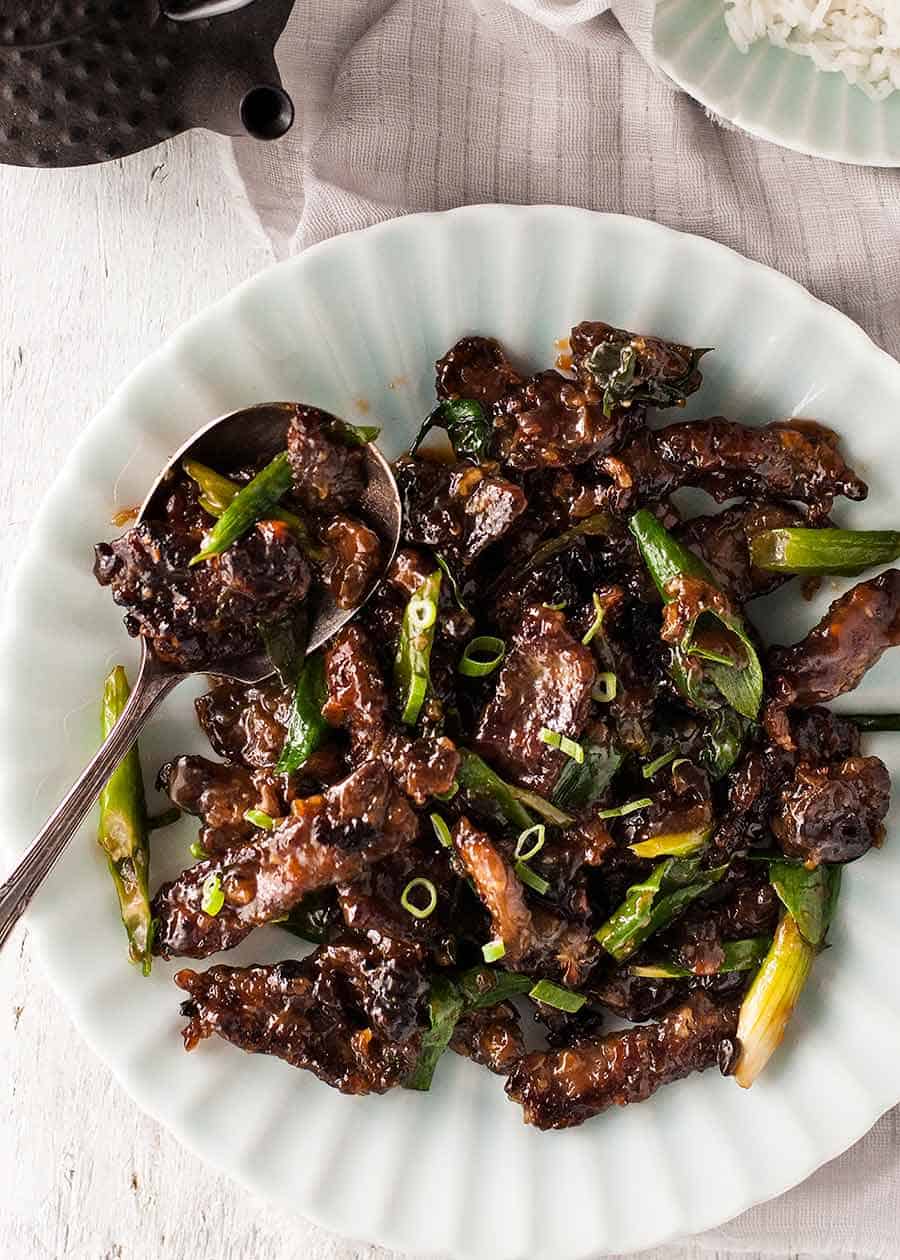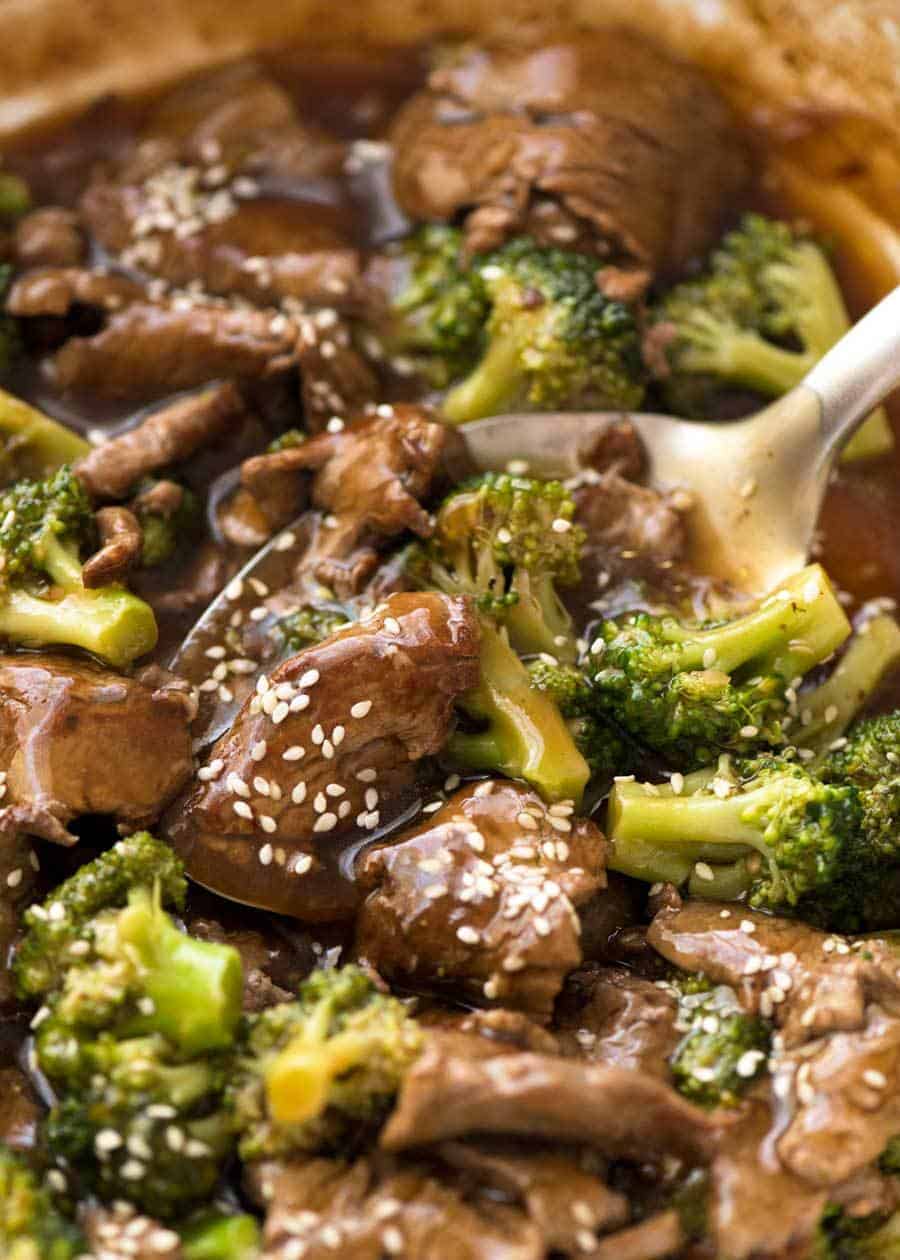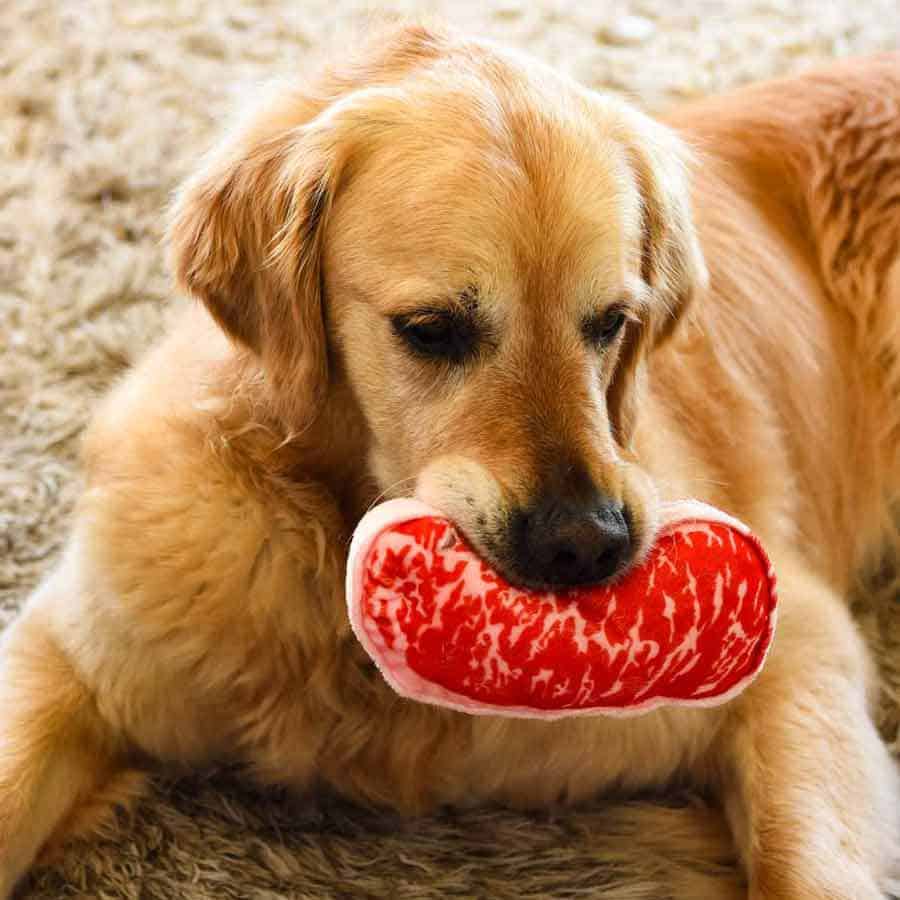It’s a quick and easy method that any home cook can do, any night of the week. No deep frying, no special equipment. This is a game changer!
How do Chinese restaurants get their beef so tender??
Ever notice how the beef at Chinese restaurants is so incredibly tender, and how your stir fries at home are just never the same? The secret is tenderising the meat. It’s called velveting beef. Your cheerful local Chinese restaurant is using economical stewing beef to make stir fries with ultra tender strips of beef by tenderising it! Other tenderising methods include marinating in a cornflour/cornstarch sludge then frying in oil before using in the stir fry, chemical tenderisers and egg white marinates. The baking soda method is the simplest for every day purposes and just as effective which is why it’s the method I use.
Sprinkle 3/4 tsp baking soda (bi-carbonate soda) on 250g / 8oz sliced economical beef cuts Toss with fingers, leave for 30 minutes Rinse, pat off excess water Proceed with stir fry recipe. It can be marinated with wet or dry seasonings, or cooked plain. The beef will be really tender and soft, “velvet’ like. Just like in stir fries made by your favourite Chinese restaurant!
Beef cuts to tenderise
These are the best cuts of beef to tenderise:
economical steaks* – any type, like good value rump, porterhouse, sirloin, round bottom etc. that are otherwise quite dry when used in stir fries; chuck and similar cuts of beef used for stews – this technique will tenderise the beef perfectly, however, by their very nature, stewing cuts of beef don’t have as strong a natural beef flavour as steaks. However, I’m fine with that because stir fries always have great sauces!
- It sounds counterintuitive to tenderise steaks because one would assume if beef is sold labelled as “steaks”, that indicates they’re good for quick cooking (eg grilling) so it should be good for stir fries. But it’s not – even steaks range from economical to high quality. You can use any high quality (expensive) steak in stir fries without tenderising (which is what fine dining Asian restaurants do). Use this tenderising technique on budget steaks, not expensive steaks.
Tenderising time
Tenderising time differs for different cuts of beef. Here’s the general rule of thumb I’ve come up with based on all the beef I’ve tried:
Chuck beef, gravy beef, oyster beef and other traditional stewing beef – 30 minutes Economical steak cuts (eg. cheap rump, hanger) – 20 minutes Blade, bolar blade – 40 minutes Brisket – the only cut I don’t recommend, haven’t been 100% happy with outcome
If you’re unsure for your cut of beef, go for 35 minutes. Even when I under or over tenderised, it was still tender and juicy. You’ll quickly figure out the best marinating times for your preferred cuts of beef – just adjust up and down by 10 minutes at a time. Word of caution: The beef will turn freakishly bright red. See? Don’t be alarmed – that’s just what happens. In fact, if you put your ear very close to the beef, you’ll hear faint fizzing – that’s the baking soda at work!
Marinating Tenderised Beef
After it’s been tenderised, go ahead and marinate it in whatever you want – wet sauce or dry seasonings. Because we’re using thin slices of beef here and it’s been tenderised, we don’t need to marinate for long. Even 10 minutes will suffice. Also, stir fries have the benefit of glossy sauces coating the beef so that’s another reason why we do not need to marinate it for long. Pictured below is the stir fry sauce / marinade for Chinese Beef and Broccoli.
How to cook tenderised beef
Tenderised beef can be stir fried the traditional way – hard and fast on a hot stove in mere minutes – or even deep or shallow fried in oil like in this Crispy Mongolian Beef (pictured below). Whichever way you cook it, the beef comes out much more tender and juicy than even expensive cuts of beef like beef tenderloin! The flavour of the beef is not affected by the tenderising. So the beef flavour will only be as good as the cut you use. Tenderising affects the texture not the flavour of the beef. It has a “velvety” texture. The fibres are softened so you get less “meaty” texture, which is why I only use this technique to tenderise strips of meat and not cubes or steaks which would be a bit too eerie!
Why tenderise beef?
Tenderising beef enables you to make fast-cook beef recipes using economical cuts of beef that usually require slow cooking to break down the tough fibres, like in Stews. And it stays tender even if you overcook the beef!
What to make with tenderised beef
Because this is a Chinese restaurant method, I’m sharing this with stir fries like Beef and Broccoli and stir fried noodles in mind. Build your own stir fry using my All Purpose Chinese Stir Fry Sauce or Peanut Sauce for stir fries! You can also use tenderised beef in place of chicken or pork in any of the stir fries. But don’t limit yourself to just Chinese recipes! The plain tenderised beef isn’t flavoured, so it can be used for any recipe calling for strips of beef that are cooked quickly, such as Beef Stroganoff. If you try this tenderising technique, I’d love to know what you think! – Nagi x
Life of Dozer
This is the only beef he’s getting today… 😂
